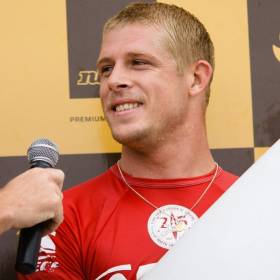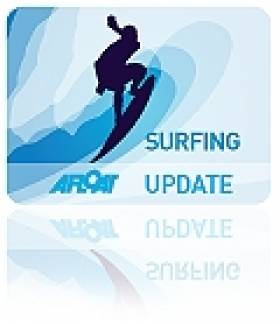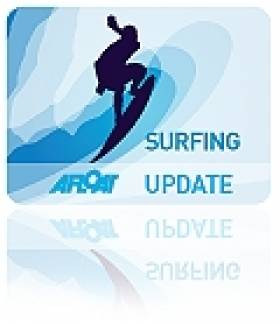Displaying items by tag: Mick Fanning
Surfing In Ireland Is A Sure Shot For All Experience Levels
#Surfing - It’s no longer such a secret that Ireland has some of the most sought-after swells among the world’s top big wave surfing talent.
But beginners aren’t left out of Surfer Today’s list of '10 surf spots you must visit in Ireland', with Inchydoney in West Cork and Achill Island in Co Mayo noted for their scenery as much as their perfect starter waves.
Sligo features on the list with two wave hotspots, Enniscrone and Easkey — both just west of Sligo town, which again hosts the Shore Shots Irish Surf Festival on the weekend of 22-23 April.
The North West is also the ancestral home of Irish-Australian surf pro Mick Fanning — famous for his close call with a shark off South Africa in 2015 — who recently paid a visit to sample the surf for himself, as documented in this new Rip Curl video:
Shark Attack Surfer Returns To Claim Victory In Same Waters
#Surfing - A year after his close call with a shark off South Africa, Irish-Australian surfing pro Mick Fanning rode the waves to victory this week at the scene of the attack.
As the Guardian reports, Fanning topped the field at the World Surfing League event at Jeffreys Bay in South Africa's Eastern Cape, where almost exactly a year ago he was knocked off his board by a shark during a contest.
Video of that incident quickly went viral online, and Fanning himself said it was a "miracle" he wasn't injured in the altercation.
Yet within days he'd already vowed to not only get back on his board - but return to the spot where his life hung in the balance.
“I’m just stoked that I actually got to come back and right the wrong," he says, "that was my whole plan, was to just to right to wrongs that happened last year. And we did that now, so we can move on.”
The Guardian has much more on the story HERE.
Irish-Australian Surfer Edges Closer To Third World Title
#Surfing - Irish-Australian surfing star Mick Fanning built up a 6,000-point lead on his closest rival, surf legend Kelly Slater, to win the Quiksilver Pro France title yesterday (4 October).
And as the Sydney Morning Herald reports, the win edges Fanning ever closer to a third reign as world surfing champion.
The Aussie of Irish parentage clinched the title in one-metre waves at the backup venue of Le Penon on the Bay of Biscay near the Spanish border.
And the 32-year-old wave whiz claims he "never really got into rhythm" until the morning of the final day, which makes his performance all the more remarkable.
The Sydney Morning Herald has much more on the story HERE.
Last year Afloat.ie reported how Fanning and his teammates captured pioneering Matrix-style 3D footage of their surfing using GoPro HD cameras. See video of their 'Mirage Moments' below:
Stunning Video of Rip Curl Surfers 'Frozen in Time'
#SURFING - Rip Curl has posted some stunning video of Irish-Australian surfing pro Mick Fanning and his teammates captured using a Matrix-style '30 camera array'.
The technique, described by Rip Curl as a "a technological world first", uses a line of GoPro HD video cameras shooting consistently as surfers ride towards and past it, capturing unique "frozen moments of time" that create a virtual 3D effect.
See more video of the Rip Curl team's 'Mirage Moments' on YouTube HERE.
































































